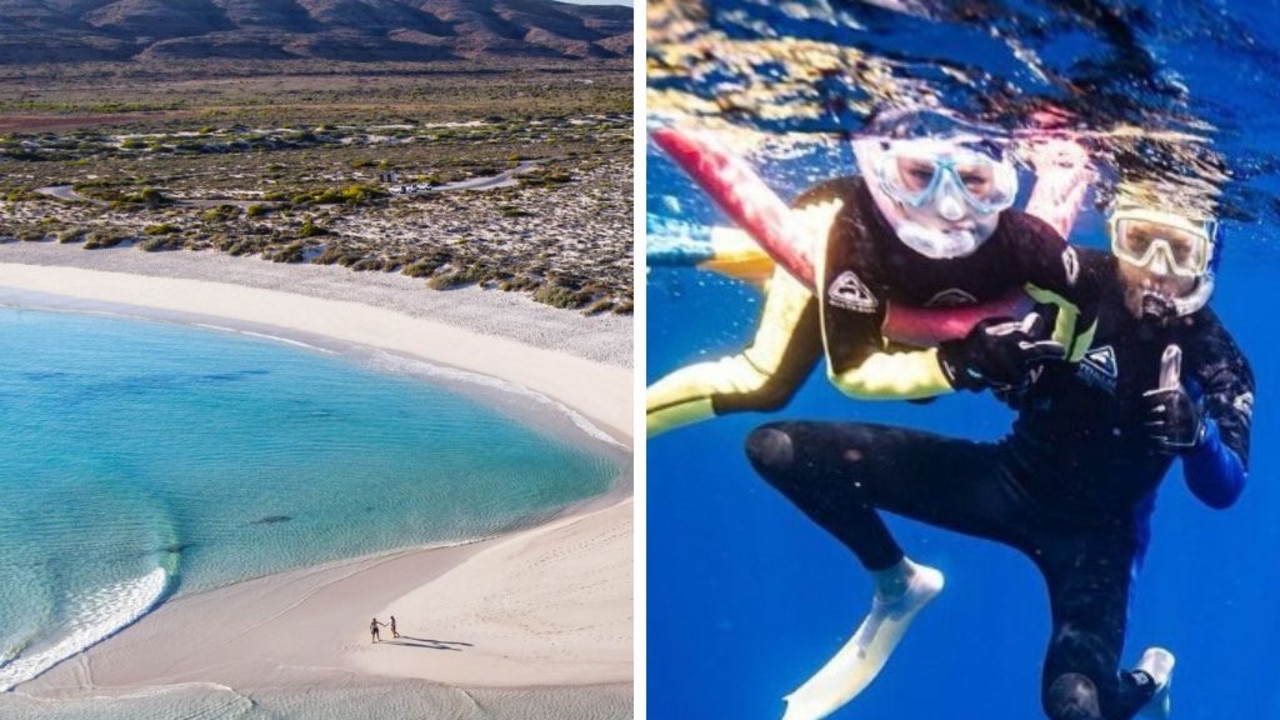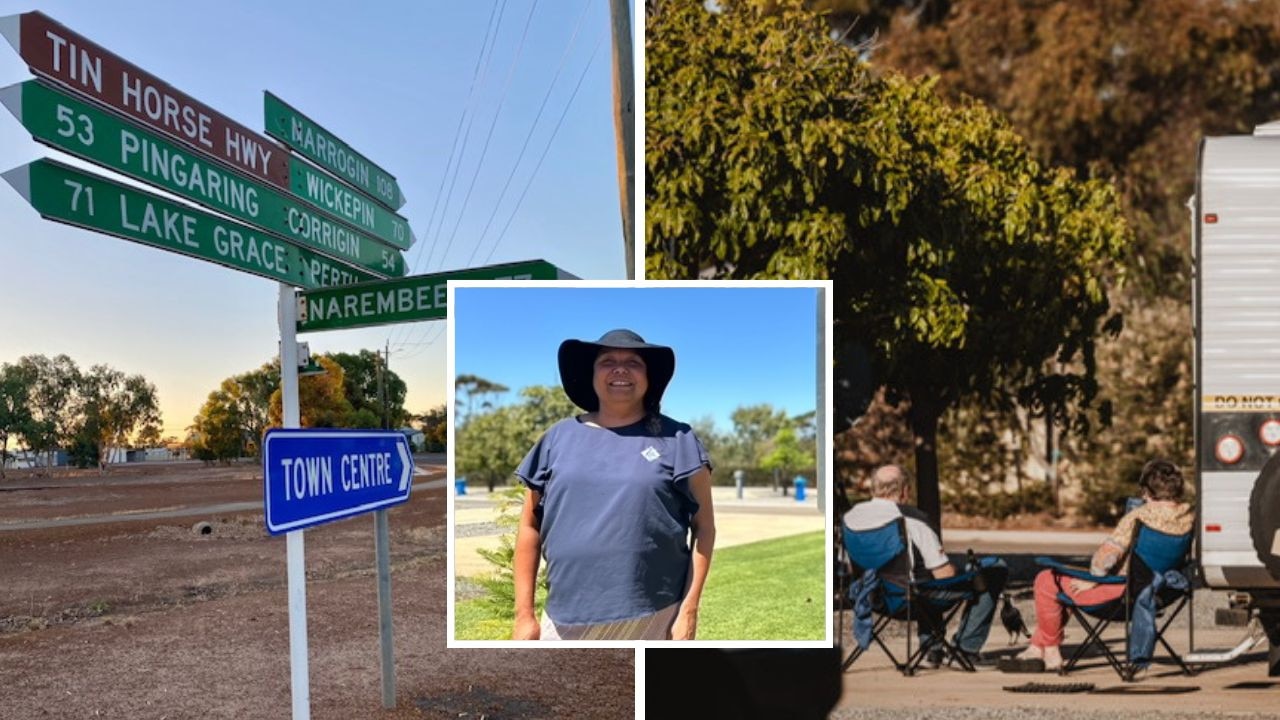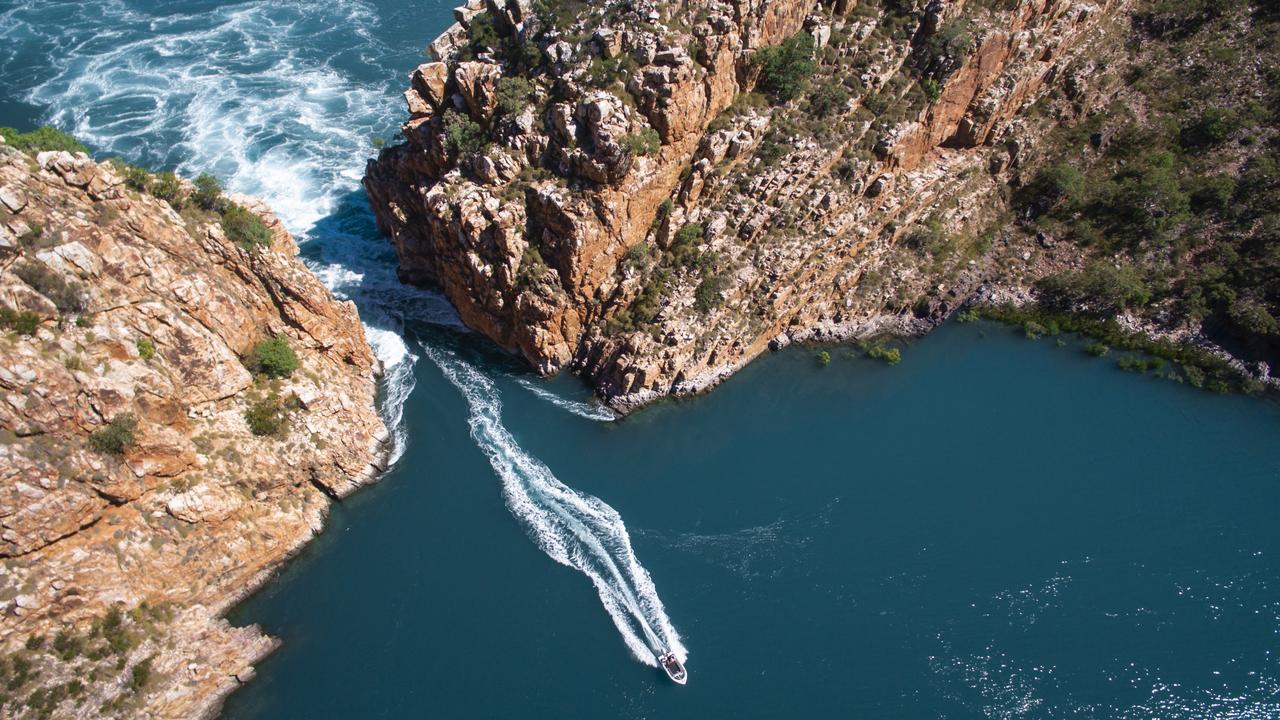Broome still a home for indigenous song and comedy
MORE than just a booming tourist town, the former pearling port of Broome is a centre for Aboriginal music and comedy.
MORE than just a booming tourist town, the former pearling port of Broome is a centre for Aboriginal music and comedy.
From country singers to comedian Mary G - who calls herself the Black Queen of the Kimberley - a cross-section of styles is on show in Broome, in Western Australia's north.
But scratch the surface and you'll also find traditional Aboriginal music.
For instance, emerging artist Mervyn Mulardy, from Bidyadanga south of Broome, has a contemporary style but also sings in his own language, Karrajarri.
Mulardy has toured with the Mary G Show and her producer, Mark Bin Bakar, says he speaks for his people.
"He is a fully initiated man and so this gives him the authority to speak with authority," Bin Bakar says.
"He could travel the world talking about his culture and the relationship humans have with the earth, nature and the spirit world as per his tribal people, the Karrajarri people."
According to Aboriginal mythology, totemic spirits in the ancient past (and present) known as the Dreamtime wandered the country along paths that have come to be known as songlines, singing the names of plants, animals and rivers, mountains and so on. It was song that brought the world into existence.
Traditionally, Aboriginal music and dance can't be separated.
In ceremonies, dancing accompanies the chanting of song cycles and the rhythm of clap sticks and, in some northern communities, the drone of the didgeridoo.
Like Mulardy, many contemporary bands and dance groups, such as the world-renowned Bangarra Dance Theatre, combine traditional music and dance and the modern.
Mulardy says a lot of older people have visions of beings and dreams and the spirit world, which become reality in a concept known as Yatangal (to his people) - which is what he named his album.
When a child is born they will take their totem from the animal seen by their parents in a dream before their mother became pregnant.
Mulardy sings about this circle of life, and how he relates to it, in Karrajarri and in English.
"My music is not only to pass on these stories but also to educate our younger generation about how important our culture is," he says.
His traditional instrument is the boomerang, not the didgeridoo, and he also uses his voice to make the sound of tiger sharks, grasshoppers and other animals.
Many indigenous musicians say their culture today is a modern version of what it was before white man arrived.
And for tourists and other non-indigenous people in places like Broome, music is one of the most easily accessible areas of indigenous culture.
Broome musicians such as the Pigram Brothers have had their music aired in the recent SBS drama series, The Circuit, set in the Kimberley and starring Gary Sweet and Aaron Pederson.
But it was a film made in 1981 that revolutionised how Aboriginal contemporary music - particularly rock and reggae - was seen to a non-indigenous audience.
Ned Lander's movie Wrong Side of the Road grew out of the work white musician Graeme Isaac was doing with disaffected Aboriginal youth in Adelaide.
Using a script based loosely on the lives of two bands, No Fixed Address and Us Mob, the road movie showed the harassment and discrimination routinely endured by Aboriginal people, particularly from police and hotels.
No Fixed Address later achieved mainstream music success.
Back in the 80s it was almost unthinkable that a Koori teenager would win something like the Australian Idol crown.
But Casey Donovan, a pop singer from a family of country and western singers, did just that in 2004.
She represents just one aspect of a varied landscape of indigenous music, including country, rock, hip-hop, reggae, soul, blues, R and B, calypso and a style known as desert surf rock, a mix of 60s Californian guitar and Aboriginal desert music.
But many great indigenous musicians aren't signed to major record labels and are therefore unknown to outsiders.
The cause of Aboriginal music was helped in 1980 when the Central Australian Aboriginal Media Association (CAAMA) began broadcasting traditional and other indigenous music, and later recording musicians.
A chain of indigenous radio stations and programs have followed, including one of the oldest, Sydney's Koori Radio.
Indigenous music now pops up in cities and towns all around Australia, but the Northern Territory is a stronghold.
Bands such as Saltwater Band, which plays calypso and reggae and come from the Galiwinku community, are an important part of the Top End music scene.
Alice Springs is home to bands such as My Boys Are Good Boys and The Rising Wind Band.
The Barunga Festival near Katherine and the Garma Festival of Traditional Culture in Arnhem Land also showcase many of these bands, singers and dancers.
There's also a vibrant Torres Strait Islander component to indigenous music. Go to Thursday Island in the Torres Strait and, from the Mills Sisters to Sunday morning church services, the music is heavenly.
Christine Anu, who was born in Cairns, is of Torres Strait Islander descent. Her signature tune, Island Home, was written by the seminal Warumpi Band.
Anu's cabaret musical, Intimate and Deadly, tells her story and follows a tradition of one-woman shows, including Leah Purcell's lauded Box the Pony.
Meanwhile Broome songwriter Jimmy Chi gave Australia its first Aboriginal musical, Bran Nue Dae, and followed that with Corrugation Road, a comedy - believe it or not - about his experiences with mental illness.
Aboriginal music has long been a vehicle for social protest.
Listen to Kev Carmody's Freedom, Arnold Smith's Invisible Woman, Invisible Man or Archie Roach's They Took the Children Away.
Singer-songwriters like Roach and his wife Ruby Hunter helped bring issues such as the Stolen Generations to mainstream Australia.
Treaty, a hit by Arnhem Land's Yothu Yindi, also helped bring Aboriginal issues into mainstream consciousness.
One musician who was deeply influenced by bands such as No Fixed Address, Coloured Stone and country and western singers like Roger Knox, Jimmy Little and Isaac Yaama is Troy Cassar-Daly, who is among the best male voices in Australian country music.
He says seeing country greats play at local theatres and in his home town of Grafton in NSW gave him the hope and inspiration to give music a go.
These days he tells up-and-coming Aboriginal musicians they have to put their stamp on their music by being themselves.
But Bin Bakar says some typical Australians traits can be identified in indigenous storytelling.
These include "understatement, cutting down the tall poppy, taking the piss, raunchiness, exaggeration ad absurdum, supporting the underdog and so on".
Further reading: Deadly Sounds, Deadly Places: Contemporary Aboriginal Music in Australia by Peter Dunbar-Hill and Chris Gibson.



